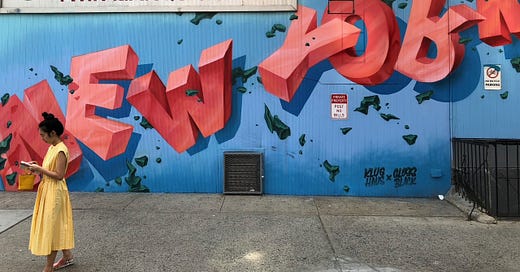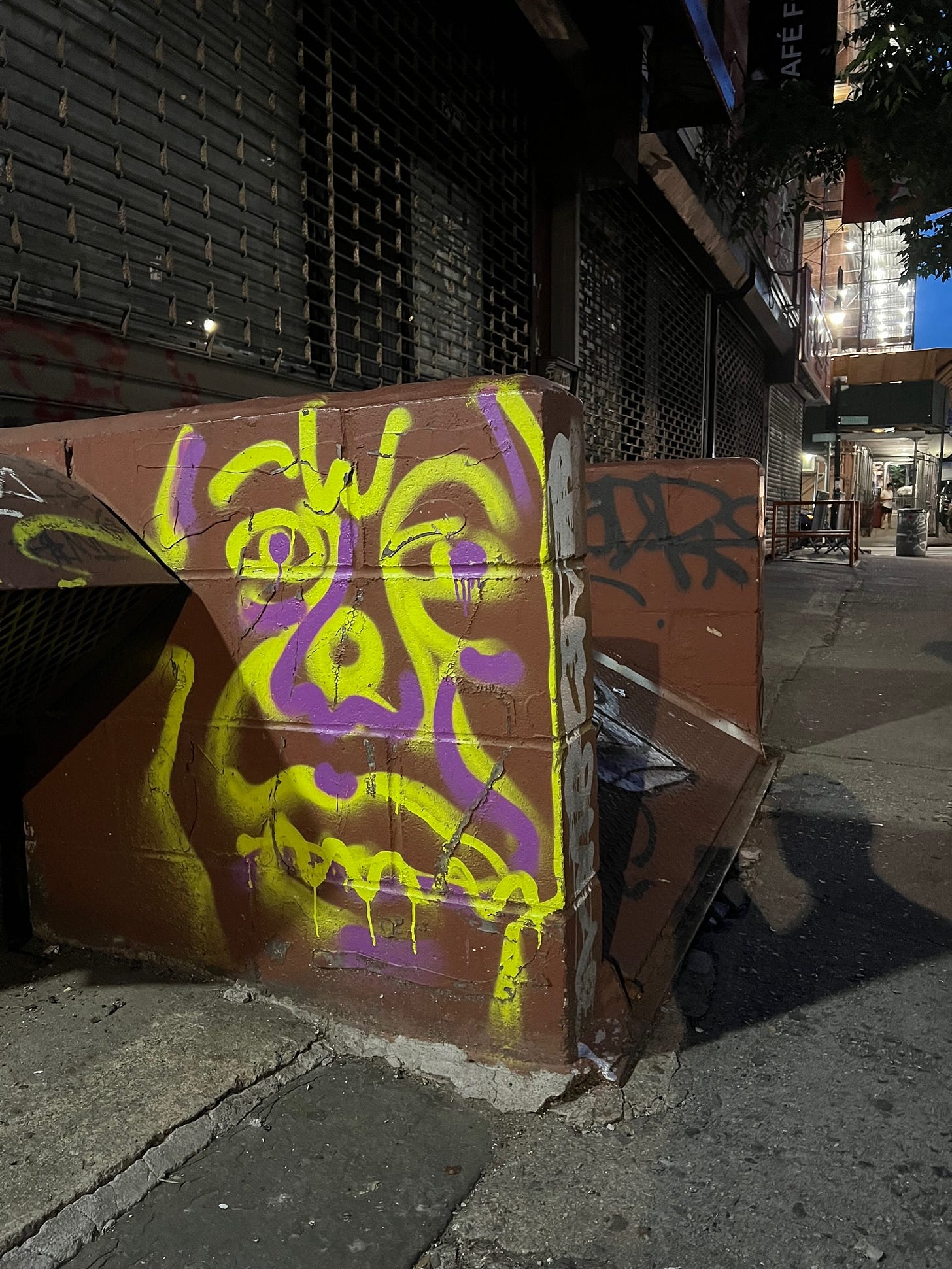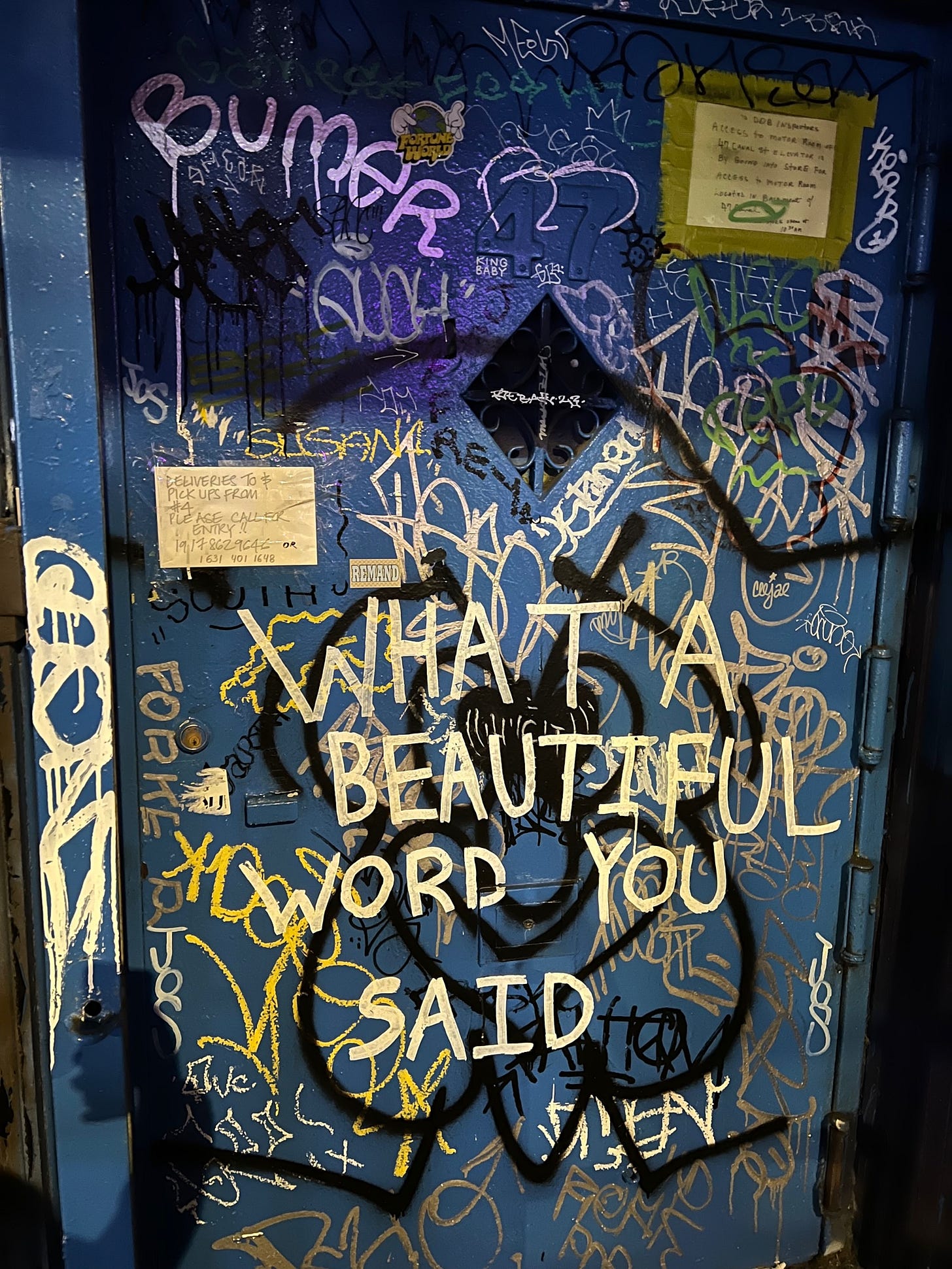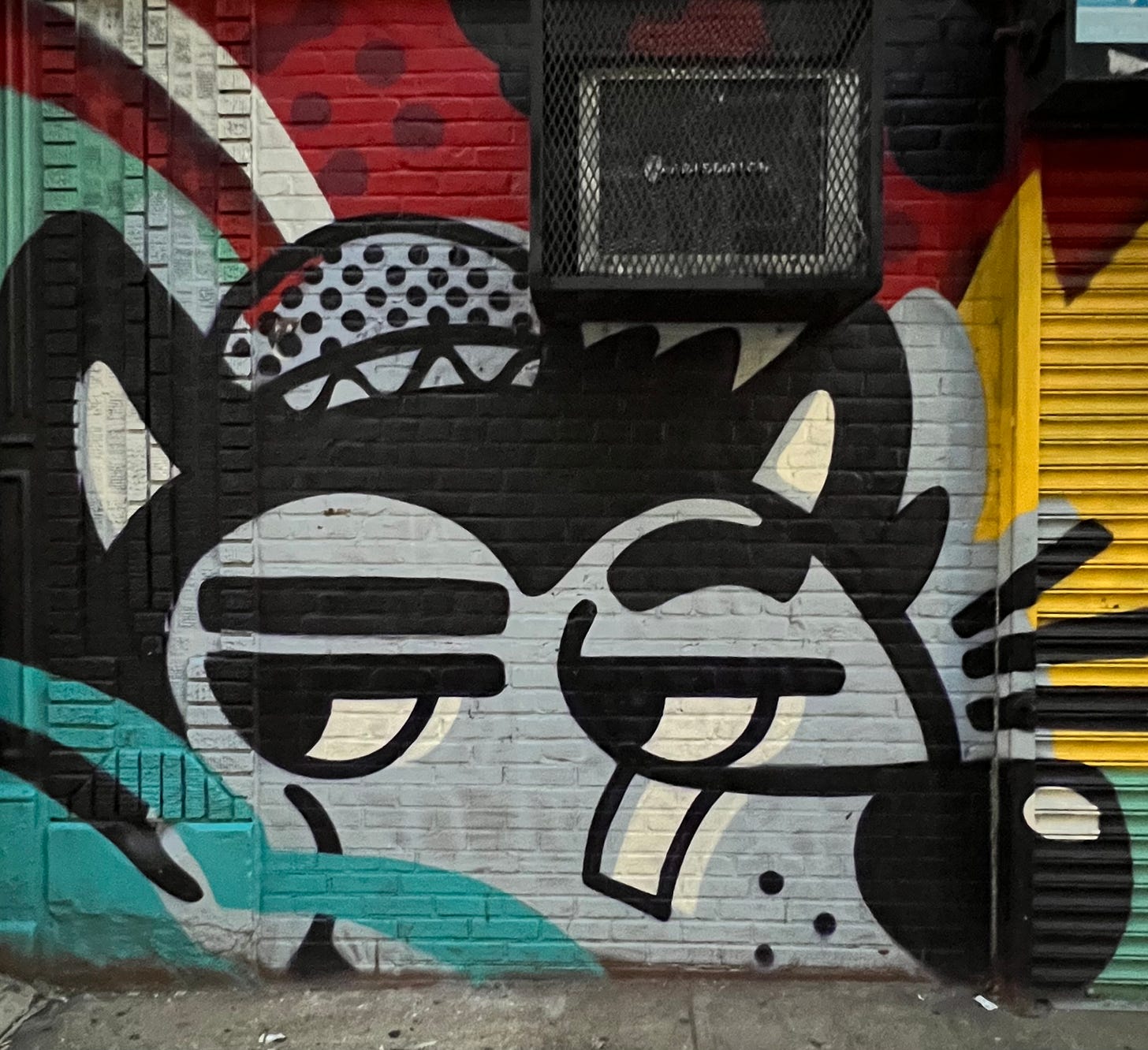My life changed forever the day I first visited the Metrograph theater on the Lower East Side. Still something of a well-kept secret in those pre-pandemic years, the cinema manifested before me like Shangri-La, touting elegance and intimacy redolent of a richer cultural era I never lived through. From my cold twentysomething ennui, this gritty and glamorous palace warmed me back to stasis.
But it’s just beyond those brick walls where I was truly awakened. Since seamless transport from one end of Manhattan to the other is asking too much of the MTA, I cushioned my commutes downtown for each movie with an entire extra hour for ultimate peace of mind. Unburdened by obligation, I found catharsis in whatever leftover minutes remained once my train pulled into Grand Street. Wandering the short but capacious blocks of Chinatown and LES promised anonymity. The enduring grunge of legacy storefronts demanded admiration, while curiosity was invoked over whether or not site histories had been accentuated or erased by stylish new tenants. Wear radiated authenticity. Shine lacked substance.
It was along these blocks that I began to note graffiti tags and street art motifs for the first time. A familiarity bloomed, and I grew endeared to cursory spraypaint portraits, acrylic neon splatterings, and poetic musings on brick canvases. In one summer, the medium evolved in my esteem from an inoffensive punk aesthetic to New York’s most vital art form. I elongated my walks to the Metrograph, journeying from further subway stops to photograph the most provocative illustrations I encountered for my Instagram stories. I started to plot walks on mangy streets in less familiar neighborhoods like Woodside and Greenpoint, too. I scoured the landscape for even the quaintest handwritten haiku. If someone left their mark, I wanted to see it.
In a recent LitHub article, novelist Jonathan Lethem reflected on lessons learned from his street artist brother and his peers in 1980s New York. He recalls the collective likening themselves to writers who considered their work “an action not only in visual space but a verbal blurt, a gesture aloud.” Lethem distinguishes the “graffiti flâneur” as one not just observing but responding to what they witness for anyone who cares to notice. He articulates the singularity of the medium in plain poetry:
“Graffiti inserts itself like the blade of a knife between creation and destruction, between publicity and furtiveness, between word and image, cartoon, icon, and hieroglyph.”
The unique appeal of street art lies in its ephemerality. Sharing the vignettes I encounter in the wild feels personal in a way that sending a snap of a Kandinsky painting at MoMA never could. And while I have boundless affection for the abstract expressionists, their work will never feel as urgent to me as what is happening here and now, coloring the world as we move through it. But as we move through it, what do we miss?
Stewarded by the gods of impermanence, I am embarking on a journey to capture the world in grander detail. sub_letter will explore the elements we tend to overlook with insights from artists, designers, and creatives who contribute to the canvases we occupy. Beginning in November, you’ll find an essay each month paired with a related interview to paint as full a picture as possible on a swath of topics in art and design.
Upcoming essays and interviews on tiny furniture, tie-dye, and architecture tours will aim to illuminate what may otherwise go unnoticed. Museum visits, book reviews, and more will also inform the shape this newsletter takes.
Subscribers will get to peek behind the curtain every month and learn about the people, places, and things that inspire sub_letter collaborators (and me) . If that’s not enticing enough, subscribers will also enjoy a monthly scan from one of my middle school or high school journal entries complete with analysis. Think of my vulnerability not as a commodity but a platform where perhaps you can make room for your own.
The most superlative spaces must uplift us with room to breathe and transform—even when our time there is temporary. There is great intimacy hidden within the liminal, and I’m excited to unearth it with you.
That’s all for now. Talk soon,
Will









